


 When
you first see the Port of Spain in Trinidad you notice all the derelict ships
cluttering the harbor. When we first decided to visit Trinidad, the port
was filled with debris and silt, and the ships propeller constantly stirred-up
plumes of mud. Since that first visit the Trinidad government has dredged
the harbor so now larger cruise ships can berth right at the dock. They
have done nothing with the derelict wrecks littering the waterway. There is
enormous amounts of construction going on in the capital city reflecting the
Trinidad government's keen interest in tourism.
When
you first see the Port of Spain in Trinidad you notice all the derelict ships
cluttering the harbor. When we first decided to visit Trinidad, the port
was filled with debris and silt, and the ships propeller constantly stirred-up
plumes of mud. Since that first visit the Trinidad government has dredged
the harbor so now larger cruise ships can berth right at the dock. They
have done nothing with the derelict wrecks littering the waterway. There is
enormous amounts of construction going on in the capital city reflecting the
Trinidad government's keen interest in tourism.
Both Trinidad and Tobago were originally settled by Amerindians of South American origin. Trinidad was first settled by pre-agricultural Archaic people at least 7,000 years ago, making it the earliest-settled part of the Caribbean. Ceramic-using agriculturalists settled Trinidad around 250 BC and then moved further up the Lesser Antillean chain. At the time of European contact Trinidad was occupied by various Arawakan-speaking groups including the Nepoya and Suppoya, and Cariban-speaking groups such as the Yao, while Tobago was occupied by the Island Caribs and Galibi.
 One of the highlights of our time in Trinidad
was taking a trip to
One of the highlights of our time in Trinidad
was taking a trip to
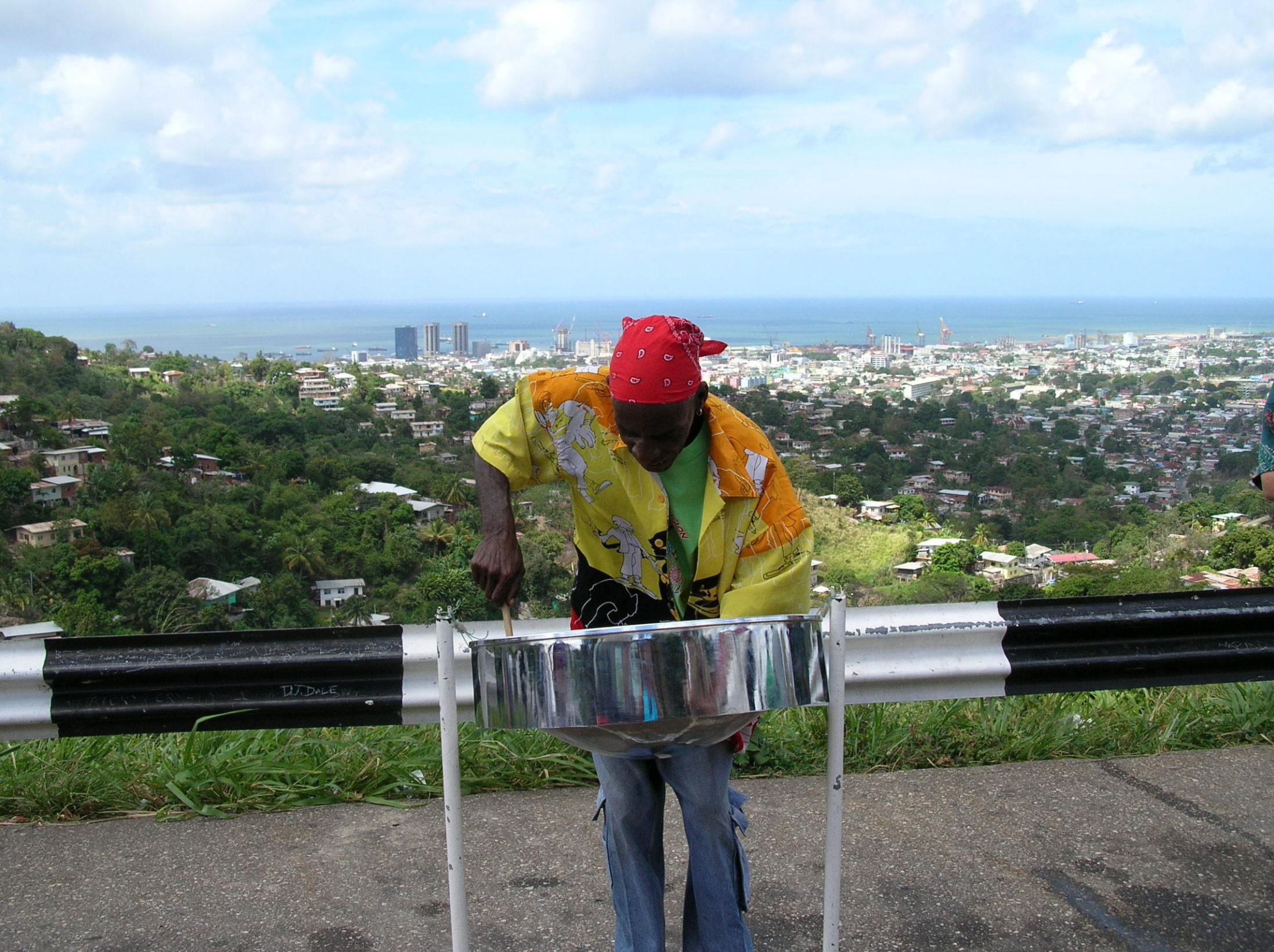 witness a small island in the mangrove of Caroni Swamp turn
blood red in the dusk of a hot summers day. Getting there was an
adventure
in itself. The tour operator was the biggest black man I had ever seen.
When I asked him his name he said it was "Blue." When I asked him how he
got his name he replied "I'm so black my mama just called me Blue."
witness a small island in the mangrove of Caroni Swamp turn
blood red in the dusk of a hot summers day. Getting there was an
adventure
in itself. The tour operator was the biggest black man I had ever seen.
When I asked him his name he said it was "Blue." When I asked him how he
got his name he replied "I'm so black my mama just called me Blue."
Blue's tour "bus" was an old two door Monte Carlo and the ride out to the Caroni Swamp is a long one from Port-of-Spain but as we rode ascended the hills surrounding Port-of-Spain Blue made a few stops for us to take photos. (above right and left). Lois was in the back seat with two gay guys who had just met. They were delighted to meet over Lois's body. I was in the front seat closely watching this guy Blue.
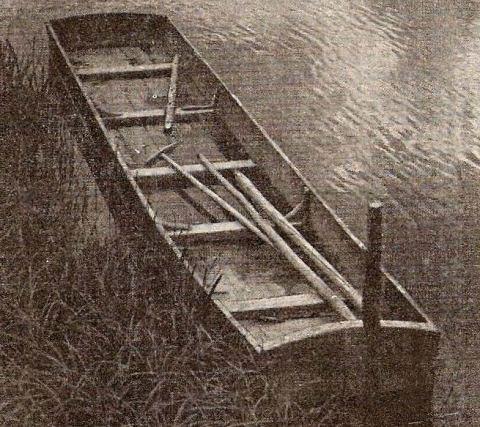 When we finally arrived, we were ushered into
small flat-bottom boats and the operators of the boats used
When we finally arrived, we were ushered into
small flat-bottom boats and the operators of the boats used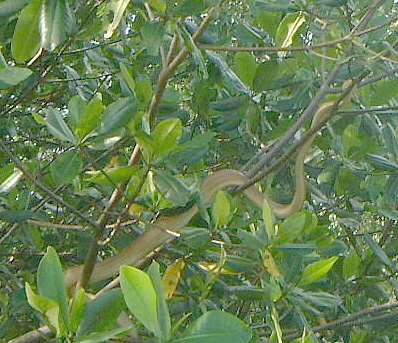 long poles to steer
and propel us forward. Before we left the "dock" I asked Blue how we would
find him upon our return in the pitch black of night. He said "you just
call my name and I'll be there." The trip through the swamp was pocked
with seeing pythons curled-up in the overhead tree branches as we passed beneath
them. Lois loved that of course.
long poles to steer
and propel us forward. Before we left the "dock" I asked Blue how we would
find him upon our return in the pitch black of night. He said "you just
call my name and I'll be there." The trip through the swamp was pocked
with seeing pythons curled-up in the overhead tree branches as we passed beneath
them. Lois loved that of course.
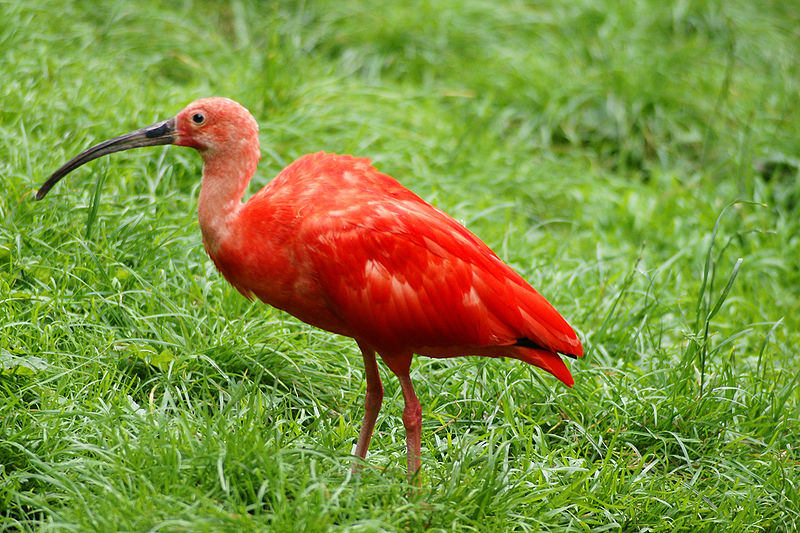 At any rate, we reached the island deep within
the Caroni Swamp, that's where the Scarlet Ibis roosts and nests. They feed on
the crabs which populate the mud-banks at the edges of or between the mangrove
roots. The spectacular evening roosts of several thousand Scarlet Ibis are
accessible via daily boat trips to the Caroni Swamp. Numbers of
Scarlet Ibis are highest from September to February the resident population is
augmented by non-breeding birds dispersing from the mainland South America. The
Scarlet Ibis has been designated as the national bird of Trinidad. It's
was spectacular to watch the island slowly turn from Green to red and yes Blue
was there when we got back for our keystone Kops ride back to the cruise ship.
At any rate, we reached the island deep within
the Caroni Swamp, that's where the Scarlet Ibis roosts and nests. They feed on
the crabs which populate the mud-banks at the edges of or between the mangrove
roots. The spectacular evening roosts of several thousand Scarlet Ibis are
accessible via daily boat trips to the Caroni Swamp. Numbers of
Scarlet Ibis are highest from September to February the resident population is
augmented by non-breeding birds dispersing from the mainland South America. The
Scarlet Ibis has been designated as the national bird of Trinidad. It's
was spectacular to watch the island slowly turn from Green to red and yes Blue
was there when we got back for our keystone Kops ride back to the cruise ship.
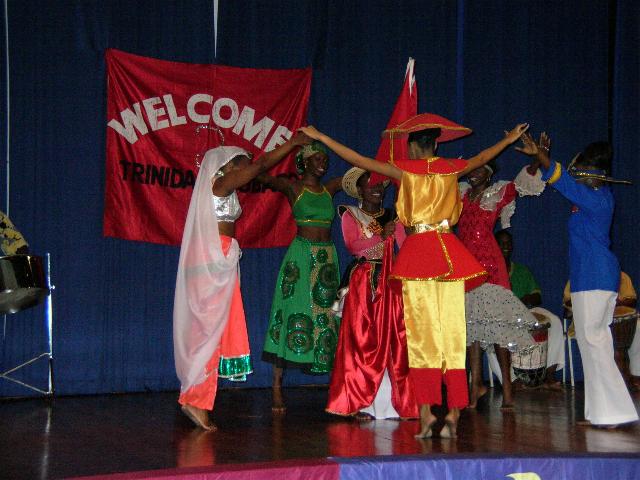 Trinidad
and Tobago culture is known for its carnival, steel band and calypso music are
famous throughout the world. The carnival was first introduced in Trinidad and
Tobago. The Trinidad and Tobago language is a mixture of African dialects
besides coining some words from other languages.
Trinidad
and Tobago culture is known for its carnival, steel band and calypso music are
famous throughout the world. The carnival was first introduced in Trinidad and
Tobago. The Trinidad and Tobago language is a mixture of African dialects
besides coining some words from other languages.
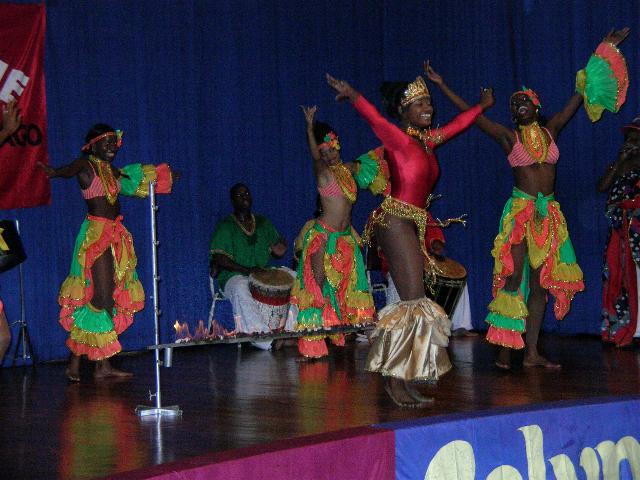 Trinidad
and Tobago culture also encompasses Trinidad and Tobago language, art, food,
society, religion. Trinidad and Tobago language is a mixture of various
languages. The Trinidad and Tobago language has words spoken among the Kwa and
Akan dialects of African origin. There are some loan words borrowed from
Spanish, French, Amerindian and East Indian Languages. Hindi words are also very
much a part of the Trinidad and Tobago language.
Trinidad
and Tobago culture also encompasses Trinidad and Tobago language, art, food,
society, religion. Trinidad and Tobago language is a mixture of various
languages. The Trinidad and Tobago language has words spoken among the Kwa and
Akan dialects of African origin. There are some loan words borrowed from
Spanish, French, Amerindian and East Indian Languages. Hindi words are also very
much a part of the Trinidad and Tobago language.
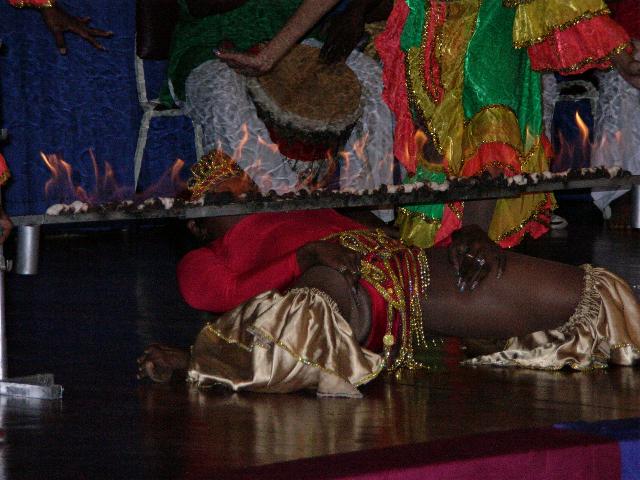
The Trinidad and Tobago carnival shows the creativity of the trinbagonians.
Carnival had its birth in the streets of Trinidad and Tobago. Kite flying is
another part of Trinidad and Tobago culture. Moreover the calypso and the steel
band is famous worldwide and is also a part of the Trinidad and Tobago culture.




